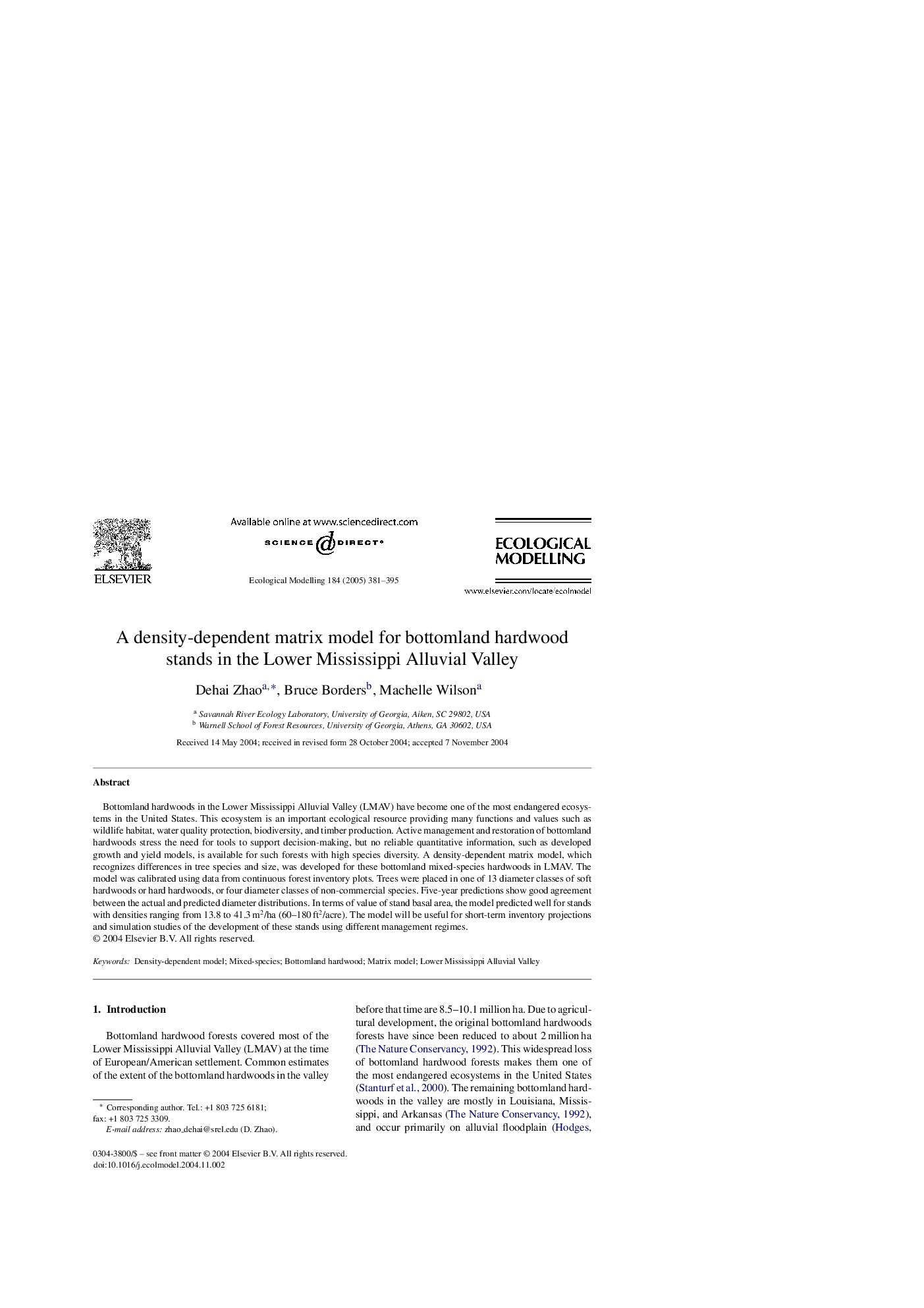| Article ID | Journal | Published Year | Pages | File Type |
|---|---|---|---|---|
| 9443465 | Ecological Modelling | 2005 | 15 Pages |
Abstract
Bottomland hardwoods in the Lower Mississippi Alluvial Valley (LMAV) have become one of the most endangered ecosystems in the United States. This ecosystem is an important ecological resource providing many functions and values such as wildlife habitat, water quality protection, biodiversity, and timber production. Active management and restoration of bottomland hardwoods stress the need for tools to support decision-making, but no reliable quantitative information, such as developed growth and yield models, is available for such forests with high species diversity. A density-dependent matrix model, which recognizes differences in tree species and size, was developed for these bottomland mixed-species hardwoods in LMAV. The model was calibrated using data from continuous forest inventory plots. Trees were placed in one of 13 diameter classes of soft hardwoods or hard hardwoods, or four diameter classes of non-commercial species. Five-year predictions show good agreement between the actual and predicted diameter distributions. In terms of value of stand basal area, the model predicted well for stands with densities ranging from 13.8 to 41.3Â m2/ha (60-180Â ft2/acre). The model will be useful for short-term inventory projections and simulation studies of the development of these stands using different management regimes.
Related Topics
Life Sciences
Agricultural and Biological Sciences
Ecology, Evolution, Behavior and Systematics
Authors
Dehai Zhao, Bruce Borders, Machelle Wilson,
